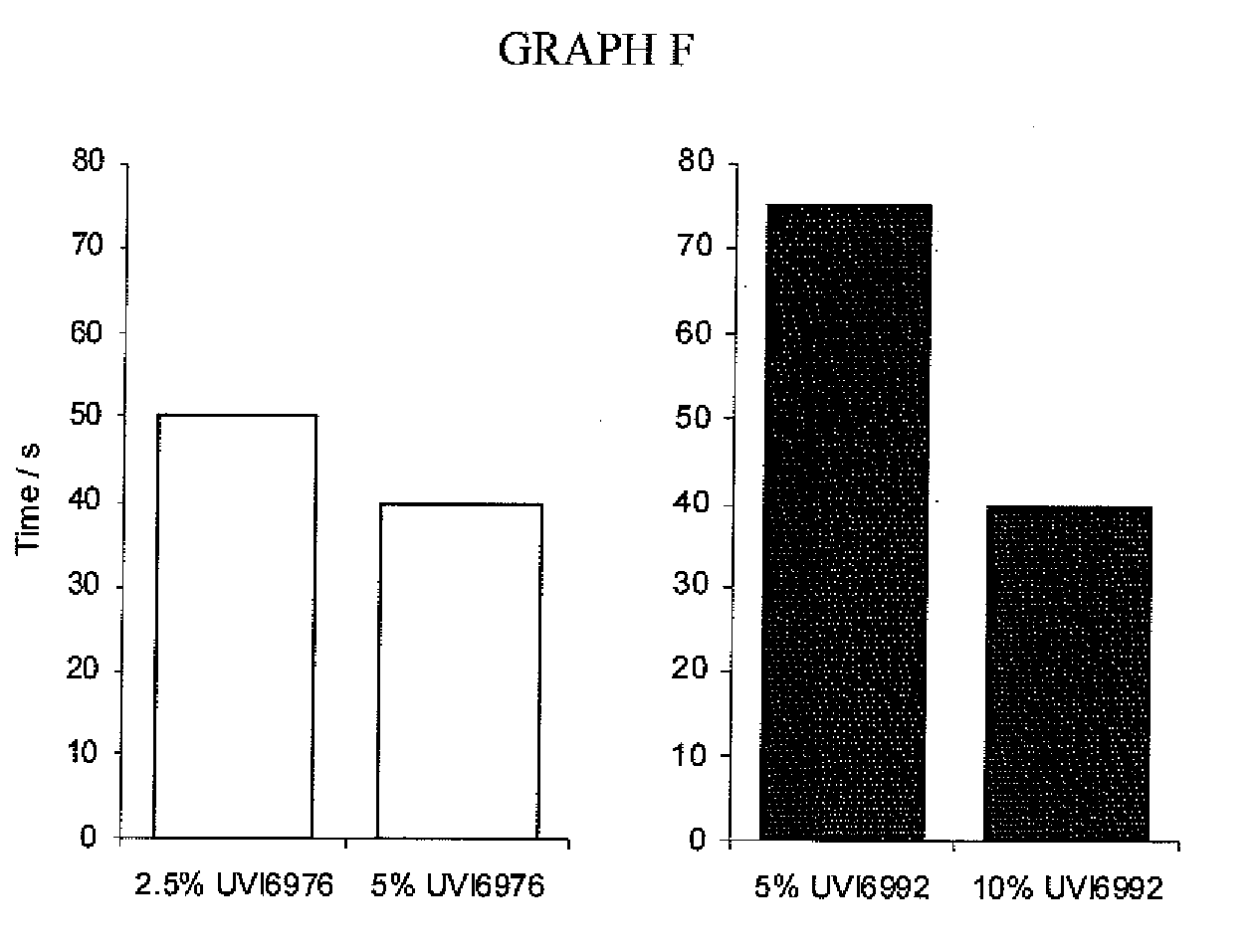Antimony-free photocurable resin composition and three dimensional article
a technology of photocurable resin and composition, which is applied in the direction of 3d object support structure, printing, inks, etc., can solve the problems of insufficient solution of removal of cationically polymerizable compound so as to achieve the effect of rapid cur
- Summary
- Abstract
- Description
- Claims
- Application Information
AI Technical Summary
Benefits of technology
Problems solved by technology
Method used
Image
Examples
examples a
[0144]The general procedure used for preparing three-dimensional articles with stereolithography equipment is as follows. The photocurable composition is placed in a vat designed for use with the stereolithography equipment at about 30° C. The surface of the composition, either in its entirety or in accordance with a predetermined pattern, is irradiated with a UV / VIS light source so that a layer of a desired thickness is cured and solidified in the irradiated area. A new layer of the photocurable composition is formed on the solidified layer. The new layer is likewise irradiated over the entire surface or in a predetermined pattern. The newly solidified layer adheres to the underlying solidified layer. The layer formation step and the irradiation step are repeated until a green model of multiple solidified layers is produced.
[0145]A “green model” is a three-dimensional article initially formed by the stereolithography process of layering and photocuring, where typically the layers a...
examples b
[0159]Tables B II-B V list the components of each photocurable composition labeled as Examples B2, B3, B5-B26 and Comparative Examples B1 and B4. The numbers in Tables B II-B V refer to the weight percent of each component based on the total weight of the photocurable composition. Table B VI provides identifying information for the trade names of the components of Tables BII-BV.
TABLE B IIComparativeComparativeEx. B1Ex. B2Ex. B3Ex. B4Ex. B5Component(wt. %)(wt. %)(wt. %)(wt. %)(wt. %)Uvacure 150056.9656.9648.9Epalloy 500048.948.9OXT 101151515CN 2301555SR 833S20.120.120.1CN1201818Albidur33444EP2240Polymeg 10001515UVI 69764.955UVI 69924.9555Irgacure 18422222Stabilizers0.0950.095Total wt. %100100100100100
TABLE B IIIEx. B6Ex. B7Ex. B8Ex. B9Ex. B10Ex. B11Ex. B12Ex. B13Component(wt. %)(wt. %)(wt. %)(wt. %)(wt. %)(wt. %)(wt. %)(wt. %)Epalloy 500048.939.663.953.938.6748790OXT-1011025OXT-2121515CN 230155555SR 833S20.120.120.120.120.1155Albidur EP4444442240Cyclohexane9.3DimethanolUVI 6992555555...
examples c
[0166]Table CII lists the components of a photocurable composition according to the present invention and labeled as Example C1. The numbers in Table CII refer to the weight percent of each component based on the total weight of the photocurable composition. Table CIII provides identifying information for the trade names of the components of Table CII.
TABLE C IIComponentExample C1 (wt. %)Epalloy 500052.9OXT-10115CN 23015SR 833S20.1UVI 69925Irgacure 1842
TABLE C IIIComponentSourceChemical NameEpalloy 5000CVC SpecialtyEpoxidized HydrogenatedChemicals Inc.Bisphenol AOXT-101Toagosei Co. Ltd.3-ethyl-3-hydroxymethyl-1-oxetaneCN 2301Sartomer Co. Inc.Hyperbranched polyester acrylateoligomerSR 833SSartomer Co. Inc.Tricyclodecane dimethanol diacrylateIrgacure 184Ciba Specialty1-hydroxycyclohexyl phenyl ketoneChemicalsUVI 6992Dow Chemical Co.Mixed arylsulfoniumhexafluorophosphate salts
[0167]The viscosity of the photocurable composition and a commercially available acrylate-containing photocurab...
PUM
| Property | Measurement | Unit |
|---|---|---|
| Temperature | aaaaa | aaaaa |
| Fraction | aaaaa | aaaaa |
| Percent by mass | aaaaa | aaaaa |
Abstract
Description
Claims
Application Information
 Login to View More
Login to View More - R&D
- Intellectual Property
- Life Sciences
- Materials
- Tech Scout
- Unparalleled Data Quality
- Higher Quality Content
- 60% Fewer Hallucinations
Browse by: Latest US Patents, China's latest patents, Technical Efficacy Thesaurus, Application Domain, Technology Topic, Popular Technical Reports.
© 2025 PatSnap. All rights reserved.Legal|Privacy policy|Modern Slavery Act Transparency Statement|Sitemap|About US| Contact US: help@patsnap.com



